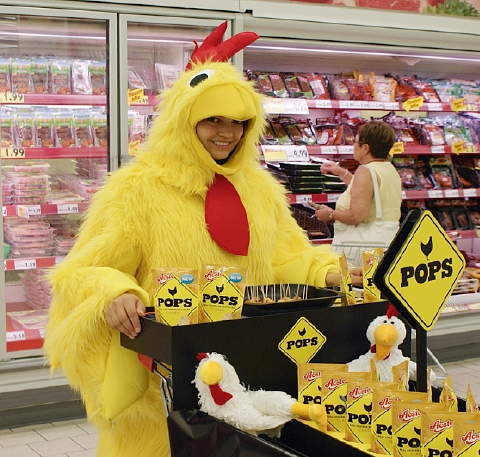How are consumers influenced when they shop?
For the first time, the Food Science and Management Department of the Bern University of Applied Sciences (BFH) held a symposium. On the topic of "Consumers at the Point of Sale", 50 people from business and science met in Zollikofen on October 22.
Thomas Brunner, Professor of Consumer Sciences at the BFH, School of Agricultural, Forest and Food Sciences, opened the symposium with his presentation. Brunner's research deals, among other things, with the atmosphere in supermarkets. In a study, the satisfaction of customers was examined on the basis of the three supermarkets Denner, Migros and Globus.

The results are not surprising: customers at Globus are most satisfied with the atmosphere in the store. However, Migros and Denner also perform well - Denner even not significantly worse than Migros. The importance of the atmosphere is also far less important to a Denner customer's satisfaction than it is to a Globus customer. Brunner found that consumers go to different shopping stores with different expectations. "A Globus customer clearly expects a nice atmosphere, while a Denner customer primarily values good value for money," Brunner said.
Too much choice for hunters and gatherers?
Arnd Florack is of the opinion that man is still a hunter-gatherer. And this therefore also applies to consumers at the point of sale. With a few examples, the professor from the University of Vienna showed that the body simulates sensory experiences before they even take place. For Florack, it's clear that "seeing is almost like eating." He advises companies to adapt everything from packaging to colors to background music to this principle as far as possible. When it comes to in-store selection, one question arises: when is the choice too much for us hunter-gatherers and overwhelming? Claude Messner, Professor of Consumer Behavior, is trying to answer this question as part of his research at the University of Bern. He is investigating whether several decisions made in succession make us more satisfied than a single complex decision. His results so far show that for sophisticated decisions with many choices, multiple, smaller decision steps make people more satisfied than a single decision. He himself calls this the "Starbuck principle." Claude Messner said at the symposium that there are limitations if there is a clear preference, in which case a single decision is better.
From apple to wine
After the lunch break, Christine Brugger introduced the participants to the world of sensory descriptions, the so-called "sensory claims". Brugger has also been conducting international research in this area for several years, using apples as an example, among others. Brugger is of the opinion that a lot could still be done at the point of sale for apples, so that customers can get to know the wide range of apples according to their preferences and select the varieties that appeal to them.
After the apples, the symposium participants learned more about wine. Wine is the big topic of Ruth Fleuchaus, professor at Heilbronn University. Fleuchaus assumes that only about three percent of all wine drinkers are real wine connoisseurs. Thus, the majority of wine drinkers are dependent on support. The professor also found that the retail trade could still do a lot to support the consumers when buying wine.
How Coop leads and seduces
At the end of the symposium, Coop presented the seductions at the point of sale. Bruno Maeder, who is responsible for category management in the Bern sales region, and Rea Flückiger showed how retailers guide and seduce consumers through the shopping process: With samplings and tastings, large retailers succeed in influencing decisions at the point of sale. As a result, the contents of the shopping bag often no longer correspond to what was on the shopping list - if one was prepared at all.
Stimulated by many surprising findings and insights, including about their own behavior at the point of sale, the participants will certainly recognize one or the other behavioral pattern in themselves the next time they go shopping - or see through a seduction trick of the supplier.









